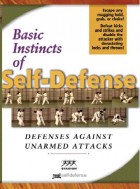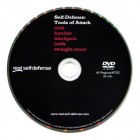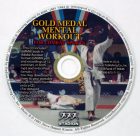Don’t stand your ground. Know it and use it, but don’t just stand your ground.
Here is my explanation, based on memoirs of an accomplished warrior, Jan Chryzostom Pasek.
In his commentary on the battles of Vienna and Parkany (Štúrovo), during the Turkish invasion of Austria in 1683, he noted the great number of dead Turks on the battlefields. He compared that to his experiences from other battlefields, particularly of battles against Tatars:
While escaping they fight, while escaping they win
“Fugiendo pugnat, fugiendo vincit [While escaping they fight, while escaping they win]. I fought against Tatars, but never have seen so many dead Tatars in one place, as Germans, Russians, and other nations; to see three, four hundred killed Tatars in one place — that’s a great victory, while seeing others piled up like so much chopped wood was a common thing.”
He then explains why: Others stand their ground, while Tatars don’t. They run and then hit back. Here is Pasek again:
“But Tatars — to escape from them is not good and to chase them is an unpleasant matter.”
Standing your ground vs. smart retreat to win a fight
The Lesson
- Standing your ground against a strong enemy is a losing proposition, especially if there is more than one enemy.
- A smart retreat extends and fragments the pursuers. It tires them too. To take advantage of enemies’ fatigue you must be fit.
- Mobility reduces losses. To maintain mobility you must be fit.
Conclusion
- Learn your terrain (house, street, park, woods, restaurant, train station, and so on).
- Practice escaping in any terrain.
- Practice inflicting damage as you escape
Questions
Are you fit enough to quickly break off from an engagement, and then, after tiring or just breaking apart the pursuers, to turn and break them one by one? Can you keep your cool and decide when the nearest one is tired enough for you to pretend to run out of steam and let him catch up with you? Is your conditioning good enough for this? Is your knowledge of the place good enough for this?
Next, Self-Defense Tip #43 — Think Like a Commander — Know Your Enemy’s Weapons.
Self-defense tip from Thomas Kurz, co-author of Basic Instincts of Self-Defense and author of Science of Sports Training, Stretching Scientifically, and Flexibility Express.
Self-Defense Moves
For your defense moves to work under stress they must be based on your natural, instinctive reactions, require little strength and limited range of motion, and be proven in fighting experience.To learn how your natural reactions can instantly defeat any unarmed attack, see the video Basic Instincts of Self-Defense.
Defend Against Weapons
To defend against weapons you have to know how they are used. Also — every stick has two ends … the weapon of attack may become a weapon of defense in your hand …To learn how the typical street weapons (club, knife, razor) are used by an experienced streetfighter and how to practice with them, see the video Self-Defense: Tools of Attack — Club, Hatchet, Blackjack, Knife, Straight Razor.
Mental Toughness
Staying cool under pressure is more important for self-defense than being physically fit and technically skilled. If you can’t control your mind what can you control?To learn mental techniques that let you calmly face any threat and act rationally in the heat of a fight, click here.
For a complete list of our products, click here.







